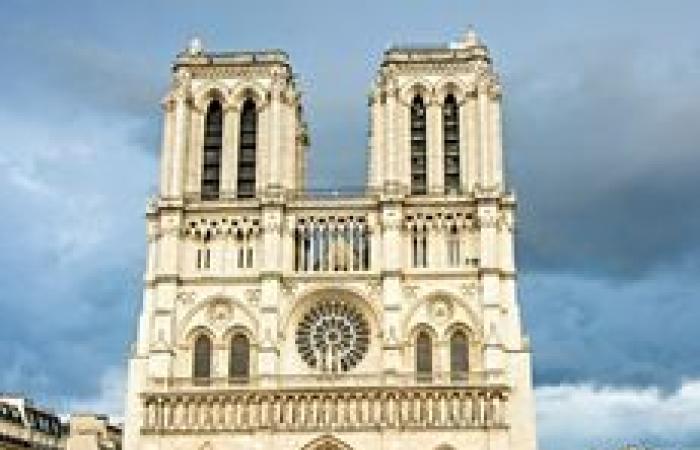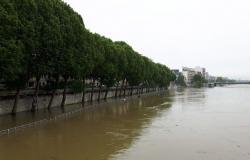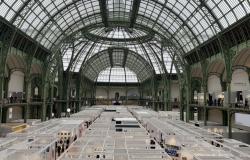In a Paris historical re-enactment video shared online, Notre-Dame de Paris Cathedral is shown with a painted facade.
The Internet user who relays the images is delighted to present the monument “consistent with its appearance at the time”.
If specialists confirm that the facade was once colored, they judge that this reconstruction is a free interpretation.
Follow the full coverage
Information scrutinized by Auditors
Internet users’ interest started with a computer-generated image video that can be seen above. The Internet user who shares them announces “a superb overview of Paris in the Middle Ages”and this promise is generally kept. But when Notre-Dame appears, we discover its facade painted red and green, with gilding and yellow statues. Nothing to do, therefore, with the bare stone that we all know. A color palette that shocked or delighted on social networks. But is it based on historical facts? This is what the TF1 and LCI auditors sought to determine.
The team searched archives and interviewed experts. If everyone attests that the facade was well painted during its construction in the 13th century, this representation is nevertheless an interpretation for them. Because the facade was not painted in its entirety, but only its three portals (new window) and the gallery of Kings, just above.
Concerning the portals, it was thanks to the restoration work that traces of paint were found. A fragment of the central portal of the Last Judgment is, for example, kept at the National Museum of the Middle Ages, better known to Parisians as the Cluny Museum. Thanks to a reconstitution watercolor, we can note that we are in very lively tones.
A medieval statue without color is considered damaged or unfinished.
Damien Berné, curator of the Cluny museum
Other traces of painting were detected in the Gallery of Kings. Some of them were found in the most unusual way. The sculpted heads of the 28 kings of Judah (the ancestors of Christ through the virgin), had been decapitated during the French Revolution. It was during work in a Parisian mansion that they were found, in 1977, in the walls of the basement where they had been hidden. It is thanks to this discovery that we know today that the hair of Kings was painted blond, red or blue-gray.
Not only were the statues of Notre-Dame well painted, but according to Damien Berné, the curator of the Cluny museum, it was not an exception: “A medieval statue without color is considered damaged or unfinished”he explained to us. The National Museum of the Middle Ages is also organizing an exhibition dedicated to these issues from November 19: Making the stones speak: Medieval sculptures of Notre-Dame.
-
Read also
In the Middle Ages, was the facade of Notre-Dame de Paris painted?
Do you want to ask us questions or submit information that you do not believe is reliable? Do not hesitate to write to us at [email protected]. Find us also on X: our team is there behind the account @verif_TF1LCI (new window) (new window) .







